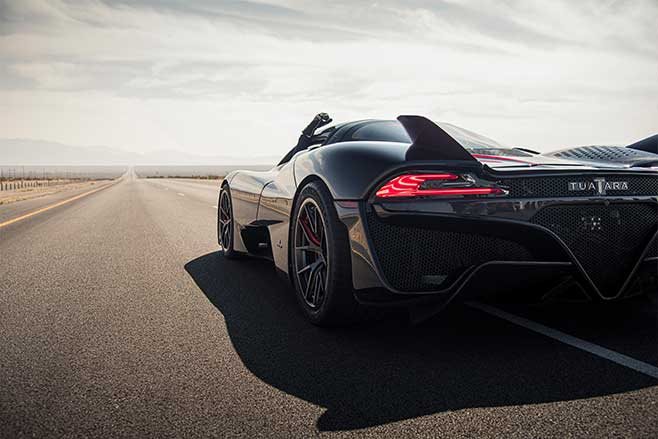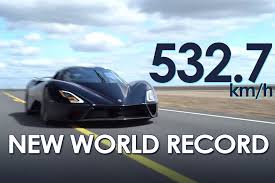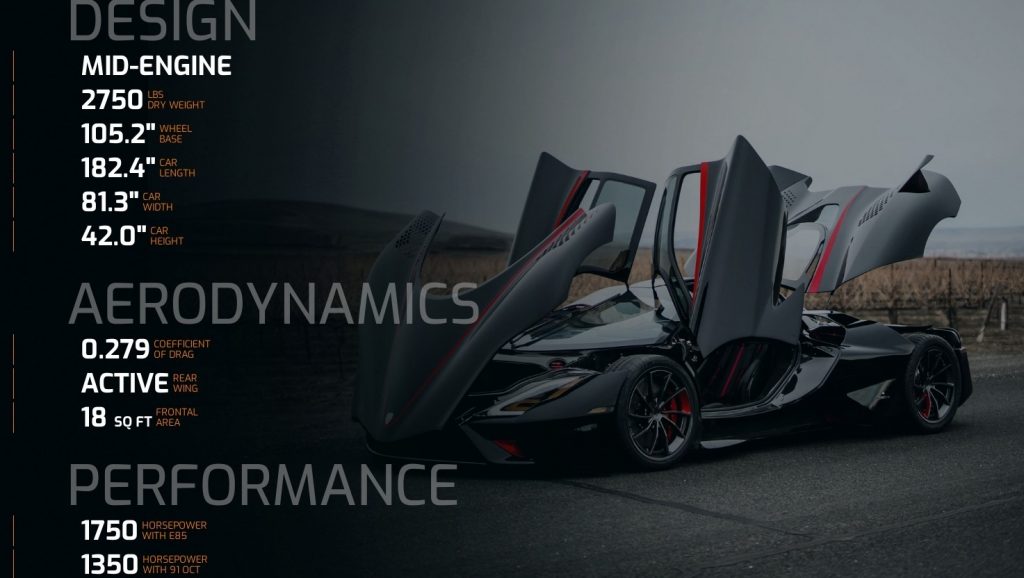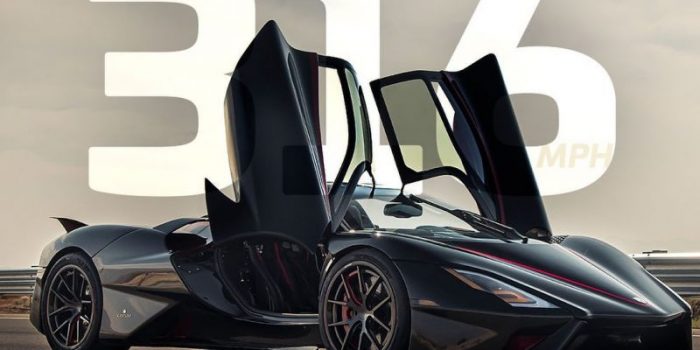With a previous record made 13 years ago, SSC has done it again and made history.
Somewhere outside Las Vegas on 10th October, pro driver Oliver Webb made a groundbreaking record. He reached a maximum speed of 331.15 mph(532.93 km/h) on his two way run in the SSC Tuatara and forever engraved its name in the automotive world.
For most of the last decade, Buggati held the record by reaching 267.81-mph (431-km/h) in 2010. Other hypercar builders like Hennessey kept the competition going.
In the mid-2010s, Bugatti Chiron, Hennessey Venom F5, Koenigsegg Jesko aimed to cross 300mph. However, Bugatti crossed that speed limit but during a one-sided drive. Finally, in 2017 Koenisgsegg reached a whopping 277.8mph (447.19 km/h), closing off the debate for a while
Although the 300mph record started looking like a close reality, it still had some bumps on the way.
After losing the record to Bugatti in 2010, the Washington State-based American supercar marque was nothing more than an afterthought in the race to break the record. But it had a groundbreaking tool in its garage throughout that time.

Tuatara was launched in 2011 when the company was known as Shelby Supercars. Its estimated top speed was 280 mph (450.6 km/h), enough to create a record.
For a few years, all was running smoothly in the direction of its launch. Then the company went off the radar and discontinued responding to any inquiry made on its production. The reality of Tuatara being produced became a doubtful question. When suddenly in 2019, the production resumed full force for a public launch.
Regular updates were released, and last week the news of SSC’s 300+ two-way drive came into the public eye, cementing its spot as a world record holder.

Confirmation came on Monday when SSC shattered expectations with the announcement of its 316.11-mph (508.73-km/h) two-way world record. That’s nearly 12 mph (19 km/h) faster than the Bugatti Chiron hit last year … and the Tuatara crossed the 300-mph barrier twice in an hour.
After the first run of 301.07 mph (484.53 km/h), Webb dialed it up and absolutely torched the return run to the tune of 331.15 mph (532.93 km/h) – and he thinks he could have gone even faster.
On Monday, the record drive was confirmed 12 mph(19km/h) faster than Bugatti Chiron’s last year’s attempt. Not just did the SSC cross the 300mph speed limit, it did it twice in two hours, and Webb thought he could go even faster than 331.15 mph (532.93 km/h).

He said that even at that speed, the car wasn’t running out of steam. The only thing that paused him from increasing the speed was the crosswinds.
The record was run on the exacting standards of the world record regulations. Two world-record holder witnesses were on hand to verify the certified GPS tracked time. 15 satellites were available to track the speed runs according to the Dewetron GPS measurements. Officials were present on-site to maintain an unbiased record.
The car was the exact model available to customers. It did not run on race fuel and had street tires. The record was made on a public road.

The official record requires a two-way run to account for wind and road grade advantages.
SSC founder and chief Jerod Shelby stated, “The most important is the human factor and no machinery limit. We reached close to the numbers, which are amazing to be done on a public road.”
The SSC now holds three additional outstanding records: highest speed on a public road, fastest kilometer on a public road, and fastest mile on a public road as well.
It also is the first car to cross the 500km/h (311mph) limit. The public road that it did the run on was the same road Koenigsegg used for its 2017 record.
The world record drive was captured by an impressive aerial team consisting of a T-33 jet, drone, and helicopter. Although the official recording is yet to be released, we can only imagine how breathtaking it will be.


